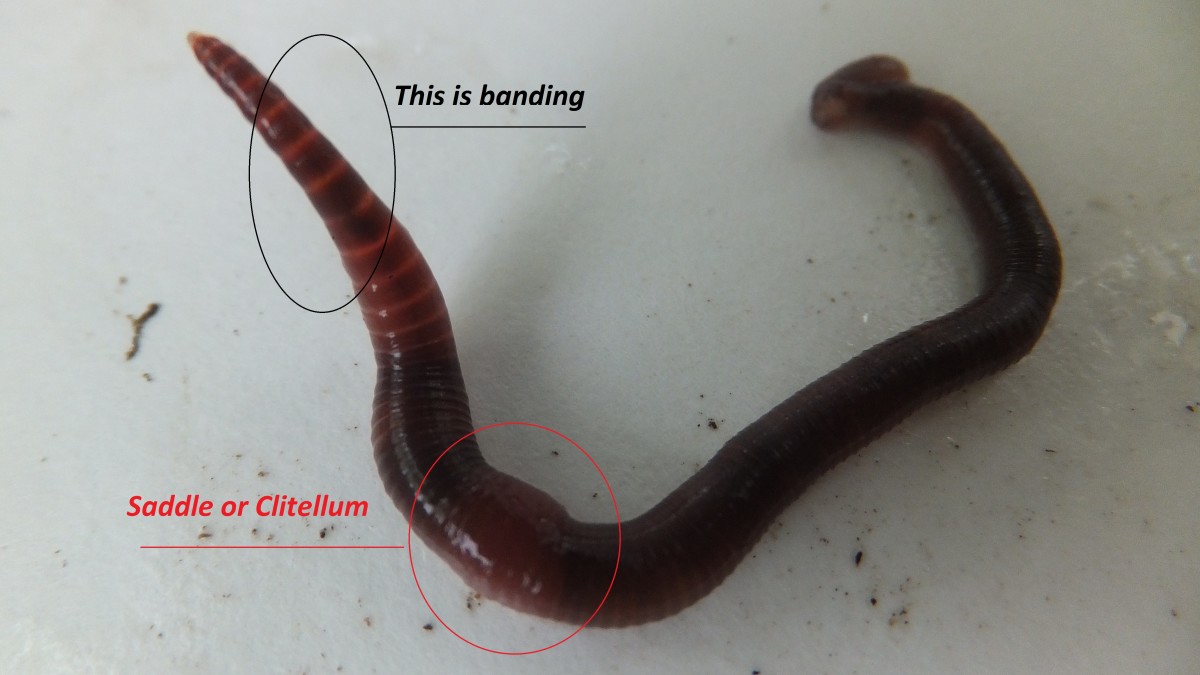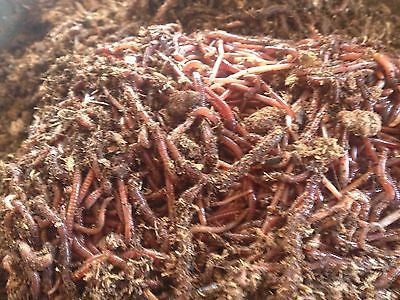Organic Composting with Red Wiggler Worms - Boost Your Garden's Growth
Organic Composting with Red Wiggler Worms - Boost Your Garden's Growth
Blog Article
Making The Most Of the Perks of Red Wiggler Worms: A Comprehensive Manual for Home Gardeners and Urban Farmers
In the realm of sustainable gardening practices, red wiggler worms stand as unrecognized heroes, quietly changing natural waste right into nutrient-rich spreadings that can function marvels for soil health. By checking out the ins and outs of exactly how to successfully care for and make best use of the advantages of red wiggler worms, people can unlock a wide range of possibilities for boosting the sustainability and performance of their horticulture ventures.
Comprehending Red Wiggler Worms
Red Wiggler worms, renowned for their efficient composting capacities, are a types of earthworms widely made use of in vermiculture practices. These worms, clinically called Eisenia fetida, flourish in decaying natural material, making them perfect prospects for composting (Red Wiggler Worms). Red Wigglers are ravenous eaters, with the ability of consuming their own weight in natural waste daily. Their digestion procedure breaks down natural issue right into nutrient-rich spreadings, which are a beneficial resource for enriching soil and promoting plant development.
One trick attribute of Red Wiggler worms is their reproductive price. These hermaphroditic creatures have both female and male reproductive organs, enabling them to replicate swiftly under beneficial conditions. A mature Red Wiggler can generate numerous spawn in a brief period, making sure a consistent populace within a composting system.

Establishing a Worm Container
When developing a worm container for vermiculture objectives, proper prep work and interest to information are important for producing a helpful setting for Red Wiggler worms. Begin by picking an ideal container for your worm container. This can be a plastic or wood container with a lid to maintain moisture levels and safeguard the worms from light. Make certain that the container has water drainage openings at the bottom to stop waterlogging.

Place the worm bin in a great, dark location far from direct sunshine and extreme temperature levels. Regularly check the wetness degrees, adding water if the bed linens feels completely dry or flaky. Feed the worms a well balanced diet plan of vegetables and fruit scraps, preventing citrus fruits, onions, and spicy foods. By following these actions, you can establish a growing worm bin that will successfully process natural waste into nutrient-rich vermicompost for your yard.
Feeding and Keeping Worms
Ensuring a healthy and well balanced diet is important for the wellness and productivity of Red Wiggler worms in a vermiculture system. Red Wigglers are starved eaters, qualified of consuming their own body weight in natural issue daily. To keep Learn More Here a successful worm populace, it is vital to give them with a selection of food scraps such as vegetables and fruit peels, coffee grounds, tea bags, and smashed eggshells. It is essential to prevent feeding them citrus fruits, onions, garlic, milk items, meat, and oily foods as these can be unsafe to the worms or create unpleasant odors in the bin.
Proper dampness degrees are also crucial for the health of Red Wiggler worms. By carefully monitoring their diet regimen, wetness, and environmental problems, home gardeners and city farmers can sustain a efficient and healthy Red Wiggler worm population for composting purposes.
Collecting Worm Spreadings
To effectively extract nutrient-rich worm spreadings from the vermicompost, a systematic harvesting procedure is crucial for optimizing the composting advantages. Red Wiggler Worms. The primary step in collecting worm castings is to motivate the worms to move to one side of the container. This can be achieved by putting fresh food scraps on one side and leaving the various other side uninterrupted for a few days. When most of worms have relocated to the side with fresh food, the spreadings can be collected from the opposite side.
After the spreadings have actually been harvested, it is very important to divide any remaining worms from the castings to prevent damaging them during storage or application. One reliable method is to produce conical piles of castings under brilliant light. Worms will intuitively relocate away from the light, permitting simple splitting up next page and elimination.
Lastly, the gathered worm spreadings should be kept in a cool, dark, and completely dry area to keep their top quality and effectiveness as a nutrient-rich soil amendment. By following these steps, home gardeners and metropolitan farmers can make the most of the advantages of red wiggler worms in their vermicomposting systems.
Using Worm Castings in Horticulture
The unification of nutrient-rich worm spreadings right into garden soil can considerably improve plant growth and overall soil wellness. Worm spreadings, additionally referred to as vermicast, are an all-natural plant food generated by red wiggler worms as they damage down natural matter. These castings are abundant in important nutrients like nitrogen, phosphorus, potassium, and useful microorganisms that promote plant development and boost soil structure.
When utilizing worm spreadings in horticulture, it is important to blend them completely into the soil or utilize them as a leading dressing around plants. The slow-release nature of worm spreadings makes certain a constant supply of nutrients to plants with time, reducing the risk of nutrient leaching and advertising long-lasting soil fertility. Additionally, worm spreadings assist enhance soil aeration, water retention, and microbial task, creating a healthy setting for plant origins to prosper.

Conclusion
In verdict, the utilization of red wiggler worms in home gardening and metropolitan farming can dramatically benefit soil health and wellness and plant development. By understanding exactly how to establish up and keep a worm container, feed the worms properly, and harvest their nutrient-rich castings, garden enthusiasts can maximize the advantages of these earthworms. Integrating worm castings into horticulture techniques can boost dirt fertility and total plant performance. Overall, red wiggler worms provide a reliable and lasting remedy for boosting yard and ranch returns.
In the realm of sustainable horticulture methods, red wiggler worms stand as unhonored heroes, quietly changing natural waste right into nutrient-rich spreadings that can function wonders for dirt health.When establishing a worm container for vermiculture objectives, appropriate preparation and interest to detail are vital for creating a conducive setting for Red Wiggler worms. The first action in collecting worm castings is to encourage the worms to migrate to one side of the container. Worm castings, also recognized as vermicast, are a look what i found natural plant food created by red wiggler worms as they break down natural matter. By understanding how to establish up and preserve a worm bin, feed the worms effectively, and gather their nutrient-rich spreadings, garden enthusiasts can maximize the advantages of these earthworms.
Report this page